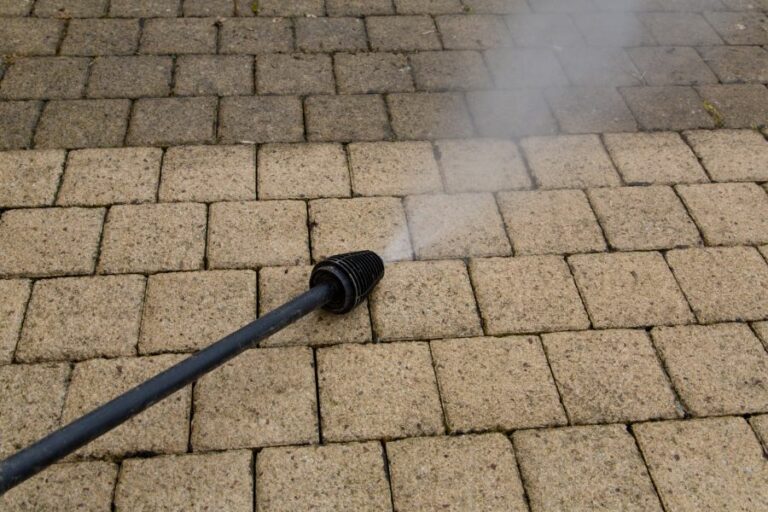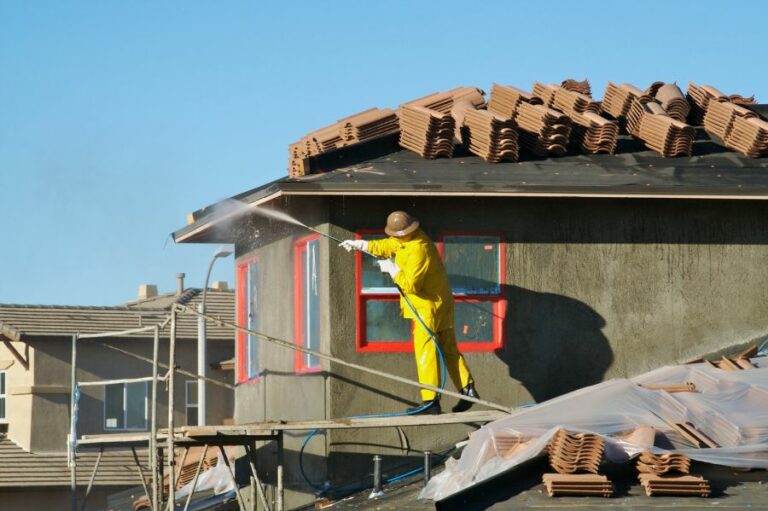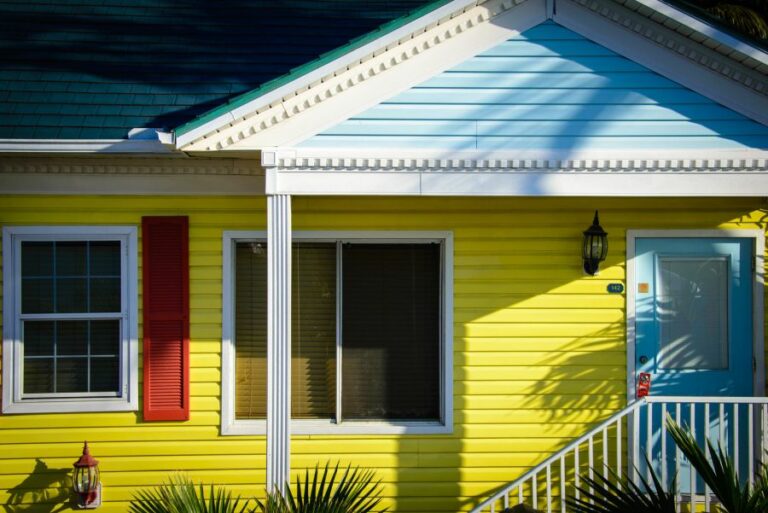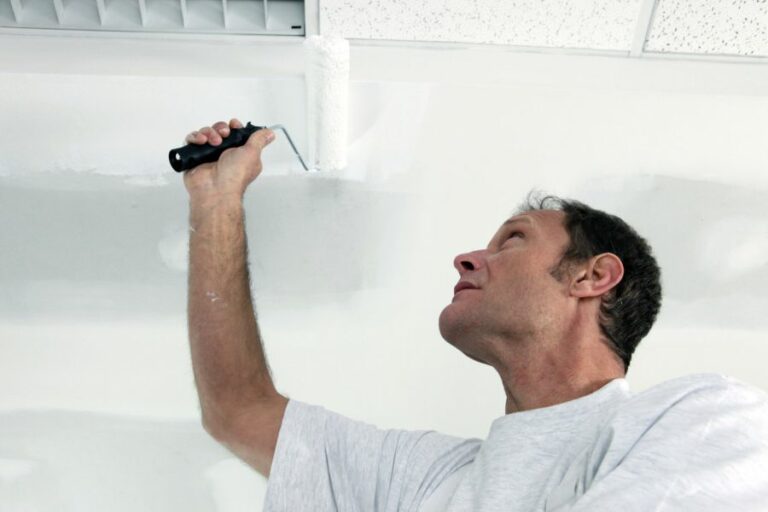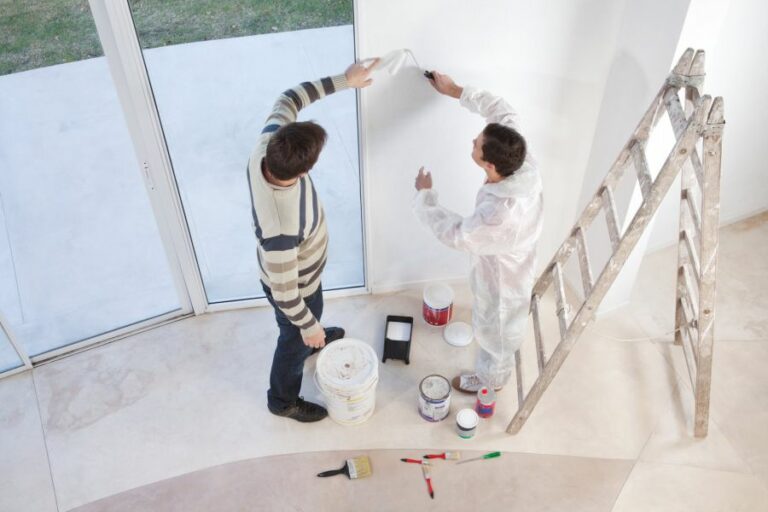Power Washing Exteriors For Cleanliness
Is your home or building’s exterior looking a bit dingy and lackluster? Fret not, as we have the perfect solution to effectively clean and restore its appearance. Our extensive knowledge and experience in power washing exteriors for cleanliness guarantee a sparkling and rejuvenated facade, making your property stand out once again.
Power washing exteriors for cleanliness:
Power washing is an effective method for cleaning various exterior surfaces, including homes, driveways, and decks, by using high-pressure water to remove dirt, grime, mold, and mildew. It enhances curb appeal, increases property value, and promotes a healthier living environment. Selecting the right power washer, nozzle, detergent, and following safety precautions are crucial for effective power washing. Professional services can be hired to achieve optimal results.

Discover the transformative effects of power washing exteriors for cleanliness! Unlock the secrets to restoring your property’s curb appeal, removing stubborn stains, and preventing future damage. Read on to learn expert tips, best practices, and innovative techniques that will leave you amazed at the results.
Contents
- 1 Exterior Power Washing for Ultimate Cleanliness
- 2 Using a Pressure Washer for Outdoor House Cleaning
- 3 Top Methods: Cleaning Your House Exteriors
- 4 Pressure Washing: Effective Cleaning Solution?
- 5 Power Washing Effectiveness on Siding
Exterior Power Washing for Ultimate Cleanliness
• Introduction: The Benefits of Power Washing
Power washing is an effective and efficient way to clean various surfaces, including the exteriors of homes, driveways, sidewalks, decks, and more. This high-pressure water cleaning technique can remove dirt, grime, mold, mildew, and other unsightly contaminants that can accumulate over time.
By maintaining a clean exterior, property owners can enhance curb appeal, increase property value, and prevent potential damage due to unchecked growth of mold and mildew. Additionally, power washing can help maintain a healthier living environment by reducing allergens and contaminants.
• Selecting the Right Power Washer
When it comes to power washing, it is essential to select the appropriate equipment for the job. Power washers come in various sizes and types, including gas-powered, electric, and battery-operated models.
It is crucial to choose the right pressure washer based on the surface being cleaned and the level of dirt or grime.
For small jobs, such as cleaning patio furniture or cars, an electric pressure washer with a PSI (pounds per square inch) range of 1500-2000 is suitable.
On the other hand, gas-powered pressure washers with a PSI range of 2500-4000 offer more power and are ideal for cleaning large areas and stubborn stains on surfaces such as concrete or brick.
The Pressure Washer Manufacturers’ Association (PWMA) website offers a comprehensive guide on selecting the right pressure washer for different applications.
• Choosing the Appropriate Nozzle and Detergent
The nozzle, also known as the spray tip, is a critical component in determining the effectiveness of power washing. Nozzles are available in various sizes and spray patterns to suit different surfaces and levels of grime.
A smaller, concentrated spray pattern is ideal for removing stubborn stains, while a wider spray is suitable for cleaning large areas or delicate surfaces.
Most power washers come with an assortment of nozzles, typically color-coded based on their spray pattern:
- Red (0 degrees): A very narrow, high-pressure spray for cutting and stripping paints or hard-to-remove grime
- Yellow (15 degrees): A narrow, high-pressure spray for heavy-duty cleaning tasks, such as concrete and brick
- Green (25 degrees): A wider spray pattern for general-purpose cleaning tasks, such as wooden decks or siding
- White (40 degrees): A broad, low-pressure spray for delicate surfaces like windows or cars
Some pressure washers also have specific detergent nozzles for applying soap or cleaning solutions. When it comes to choosing a detergent, it is crucial to select a product explicitly designed for power washing and compatible with the type of material being cleaned.
• Safety Precautions for Power Washing
Operating a pressure washer requires precaution to prevent accidents and injuries. The high-pressure water spray can cause harm to people, pets, and property if not handled carefully.
Here are some essential safety tips to follow when power washing exteriors:
- Always wear appropriate protective gear, such as safety goggles, gloves, and non-slip footwear
- Keep children, pets, and bystanders at a safe distance during operation
- Avoid spraying towards electrical outlets, wires, or other sensitive equipment
- Hold the spray gun firmly with both hands and maintain a stable stance while cleaning
- Start with the lowest pressure setting and gradually increase as needed
- Use the appropriate nozzle for the task and follow the manufacturer’s guidelines on usage and maintenance
• Professional Power Washing Services
While power washing may seem like a simple, do-it-yourself task, it can be time-consuming and, if improperly done, can lead to surface damage.
Depending on the size of the area being cleaned and the specific requirements, it may be more efficient and cost-effective to hire a professional power washing service.
Professional power washing companies have experience in cleaning various surfaces and materials and can recommend the most suitable technique and equipment for the task. Additionally, they may have access to more powerful and specialized equipment to complete the job quickly and effectively.
To find a reputable power washing service in your area, consider seeking recommendations from friends or neighbors, reading online reviews, or checking the Better Business Bureau for accredited companies with a good track record.
• Maintaining Cleanliness After Power Washing
After power washing the exterior surfaces of your property, it is essential to establish a routine maintenance plan to prevent the accumulation of dirt, grime, and other contaminants.
Regular cleaning, prompt removal of debris, and periodic inspections for signs of mold, mildew, or damage can go a long way in keeping your exterior looking clean and well-maintained.
Power washing exteriors can significantly contribute to the cleanliness and curb appeal of your property. By choosing the right equipment, following safety precautions, and maintaining a clean environment, you can enjoy the benefits of a clean and attractive exterior for years to come.
Using a Pressure Washer for Outdoor House Cleaning
The answer is a resounding yes. Pressure washing the exterior of your home can be an excellent method for removing dirt, grime, and even mold from siding, brick, and other surfaces.
• Why Pressure Washing is Beneficial
Pressure washing can provide several benefits for homeowners:
- Removes dirt and grime: Pressure washing can effectively remove dirt, grime, and other contaminants from the exterior of your home, giving it a fresher, brighter appearance.
- Prevents mold and mildew growth: By removing moisture-attracting elements from exterior surfaces, pressure washing helps to prevent the growth of mold and mildew.
- Maintains paint and siding condition: Regular pressure washing can help maintain the condition of your home’s siding, paint, and other surfaces, ensuring that they will last as long as possible.
- Increases curb appeal: A clean, well-maintained home exterior can significantly improve your home’s curb appeal and overall appearance.
• Suitable Surfaces for Pressure Washing
Pressure washing can be used to clean several types of exterior surfaces, including:
- Vinyl siding
- Wood siding
- Brick
- Stucco
- Concrete
- Stone
- Asphalt
It is important to note that some surfaces, such as older, more delicate wood siding, may require a gentler approach than pressure washing. In these cases, low-pressure washing or soft washinga technique that uses lower pressure and specialized cleaning solutionsmay be a more suitable solution.
• Steps and Tips for Pressure Washing Your Home
Before you begin pressure washing your home, consider the following steps and best practices to ensure a safe and effective cleaning experience.
1. Choose the Right Equipment
To effectively clean your home’s exterior, you will need a pressure washer that is powerful enough to remove dirt and grime from surfaces without causing any damage. Check the pressure washer’s PSI (pounds per square inch) rating, which indicates water pressure.
Generally, pressure washers with a PSI between 1,300 and 3,000 are suitable for home use. Additionally, consider selecting a unit with adjustable pressure settings, allowing you to choose the appropriate level of pressure for different surfaces.
2. Select the Right Nozzle
Pressure washer nozzles come in various sizes and spray patterns, impacting the pressure and coverage of water. For cleaning your home’s exterior, choose a nozzle with a wider spray pattern (typically a 25-degree or 40-degree nozzle) to distribute water over a larger area and keep from damaging surfaces.
3. Use Appropriate Cleaning Solutions
Using a specialized cleaning solution designed for exterior surfacesparticularly those formulated to remove mold and mildewcan significantly enhance the effectiveness of your pressure washing.
Be sure to select a cleaning solution that is compatible with your pressure washer and safe for the surfaces you will be cleaning.
4. Test on a Small, Inconspicuous Area
Before pressure washing your entire home, test the pressure washer on a small, inconspicuous area to ensure the pressure setting and cleaning solution do not cause any damage. Adjust the pressure settings or dilute your cleaning solution as needed to prevent potential issues.
5. Work from Top to Bottom
When pressure washing your home, begin at the top of each surface and work your way down, allowing gravity to move dirt and grime downward as you clean. This approach helps prevent streaking and ensures more efficient cleaning.
6. Maintain a Safe Distance
During the pressure washing process, maintain a safe distance between the pressure washer nozzle and the surface being cleaned to avoid causing damage. Generally, keep the nozzle at least 1-2 feet away from the surface, adjusting as necessary based on the pressure setting and surface sensitivity.
7. Be Safe
Pressure washing can be hazardous if not handled correctly. Wear protective gear such as goggles, gloves, and closed-toe shoes when using a pressure washer. Additionally, take care to avoid spraying electrical outlets, windows, and other sensitive areas.
• In Conclusion
Pressure washing can be an effective and efficient way to clean the exterior surfaces of your home. When performed correctly, this method can improve your home’s appearance, curb appeal, and overall condition while removing dirt, grime, and potential mold and mildew growth.
By following the steps and best practices outlined in this article, you can safely and effectively use a pressure washer to clean the outside of your house.
Top Methods: Cleaning Your House Exteriors
Maintaining and cleaning the exterior of your home is a crucial task that serves not only to improve your home’s curb appeal but also to protect it from various elements that can cause damage.
• Preparing for the Cleaning Process
Before diving into the actual cleaning process, it’s essential to prepare your home and yourself. Here are a few essential steps before starting the cleaning process:
– Safety First
Ensure that you have appropriate safety gear like gloves, goggles, and non-slip shoes. If you’re going to use a ladder, make sure it’s properly secured and placed on level ground. It’s always a good idea to have someone with you, acting as a spotter, to help ensure your safety.
– Protect your Plants and Outdoor Furniture
Cover or remove any outdoor furniture, toys, and plants to protect them from any cleaning solution or water damage. Alternatively, you can water your plants to prevent the cleaning solution from harming them.
– Choose the Right Cleaning Solution
There are numerous cleaning solutions available on the market, but it’s important to select one that’s specifically designed for exterior cleaning. Consider using environmentally friendly, biodegradable cleaners to minimize any harm to your plants and the environment.
You can also make a DIY cleaning solution by mixing one part bleach with four parts water or mixing one cup of white vinegar with one gallon of water. These solutions are effective at removing dirt and mildew from your home’s surfaces.
• Cleaning your Home’s Exterior
Now that you’re prepared, here are the methods and steps for cleaning the exterior of your house:
– Soft Washing vs. Pressure Washing
- Soft Washing: Soft washing involves using a gentle stream of water infused with a cleaning solution, making it suitable for delicate surfaces like wood, brick, and stucco. Soft washing has excellent results in removing dirt, mildew, and algae without causing any damage to your home’s exterior.
- Pressure Washing: Pressure washing uses high-pressure water to clean your home’s surfaces. While this method is highly effective in removing tough stains and grime, it can also cause damage to your home’s exterior if not done correctlyreserving pressure washing for more robust surfaces like concrete, stone, and vinyl siding.
As a personal recommendation, I find that combining both methods – soft washing delicate surfaces and pressure washing durable surfaces – yields the best results.
– Steps for Effective Exterior Cleaning
- Rinse the Surface: Before applying any cleaning solution, it’s essential to rinse your home’s exterior to remove any loose dirt and debris. Use a garden hose or a pressure washer with a wide spray nozzle set to low pressure.
- Apply the Cleaning Solution: Mix your preferred cleaning solution according to the manufacturer’s instructions or your DIY recipe, and apply it to your home’s exterior using a soft brush, sponge, or soft washing system.
- Scrub if Necessary: For stubborn stains or mildew, you may need to scrub the surfaces using a soft bristle brush to break up the grime. Keep your strokes gentle to avoid damaging your home’s exterior.
- Rinse Thoroughly: After letting the cleaning solution sit for the recommended time, thoroughly rinse the area using a garden hose or low-pressure setting on the pressure washer. Make sure to remove all cleaning solution residue to avoid leaving streaks or marks on your home’s surfaces.
- Clean Windows and Doors: Clean your windows and doors using a mild soapy solution or window cleaner with a squeegee, ensuring not to damage any screens, weather stripping, or seals.
- Inspect your Home: After the cleaning process, inspect your home for any signs of damage or areas that may require additional cleaning or repairs. Address these issues promptly to maintain your home’s curb appeal and structural integrity.
For a comprehensive guide on exterior house cleaning, visit this link from Pennsylvania State University’s Extension website.
• Additional Tips and Recommendations
- Schedule regular exterior cleaning, at least once a year, to maintain your home’s appearance and prevent any potential damage from dirt, mildew, or algae.
- Avoid cleaning your home’s exterior during the hottest part of the day or direct sunlight to minimize soap residue and streaks.
- When cleaning your home’s exterior, be mindful of your water usage and consider using environmentally friendly practices, such as collecting and reusing water for other purposes like watering plants.
In conclusion, cleaning the outside of your house is an essential task for maintaining your home’s durability and curb appeal. By following these best practices and recommendations, you’ll be able to achieve a clean, fresh-looking, and well-maintained exterior that both you and your neighbors can appreciate.
Method | Tools/Supplies | Instructions |
|---|---|---|
Pressure Washing | Pressure washer, water, safety gear (goggles, gloves) | 1. Set up the pressure washer according to the manufacturer’s instructions. 2. Put on safety gear to protect your eyes and hands. 3. Starting at the top, work your way down the house in a smooth, controlled manner, overlapping each stroke by 8 inches. |
Soft Washing | Low-pressure washer or garden hose, soft brush or sponge, cleaning solution (e.g., soap and water or commercial cleaner), ladder | 1. Mix a cleaning solution following the manufacturer’s instructions or create your own solution. 2. Wet the surface of your house with water using a low-pressure washer or garden hose. 3. Apply the cleaning solution to the surface, starting at the top and working your way down. 4. Scrub the surface gently with a soft brush or sponge, being careful not to damage the surface. 5. Rinse thoroughly with clean water, again starting at the top and working your way down. |
Hand Washing | Bucket, mild detergent, water, ladder, large sponge, garden hose | 1. Fill a bucket with warm water and mild detrgent, creating a soapy mixture. 2. Set up a ladder to reach high areas safely. 3. Wet the surface of your house with water using a garden hose. 4. Dip the sponge into the soapy mixture and gently scrub the surface in a circular motion, working in sections. 5. Rinse the sponge frequently to remove dirt and debris. 6. Rinse the soapy mixture off the surface with a garden hose, working from top to bottom. |
Pressure Washing: Effective Cleaning Solution?
Pressure washing is a popular and effective method for cleaning a variety of surfaces, such as sidewalks, driveways, and building exteriors. But does pressure washing clean? The answer is yes, it does.
• Pressure Washing: An Overview
Pressure washing, also known as power washing, uses high-pressure water to remove dirt, grime, and other unwanted materials from surfaces.
The water is usually supplied by a pressure washer, which is a portable machine that can generate water pressure of up to 3000 psi (pounds per square inch). This high pressure is what enables the water to remove even the most stubborn stains and dirt.
– How Does It Work?
Pressure washers work by using a pump to increase the pressure of the water being forced through a nozzle. The water is then directed at the surface that needs cleaning.
The force of the high-pressure water dislodges dirt, mold, algae, and other contaminants from the surface, leaving it clean and free from stains.
When using a pressure washer, it is important to choose the correct pressure settings and nozzle attachments to ensure effective cleaning without damaging the surface.
A lower pressure setting and a wider nozzle should be used on delicate surfaces, such as wood or painted surfaces, to prevent damage.
For more robust surfaces, such as concrete or brick, a higher pressure setting and a narrower nozzle can be used for more effective cleaning.
• Applications of Pressure Washing
Pressure washing can clean a wide variety of surfaces, making it a versatile and efficient cleaning method. Some common applications include:
1. Driveways and Sidewalks
Pressure washing is an effective way to clean concrete, cement, and stone driveways and sidewalks. It can remove dirt, grease, oil stains, moss, gum, and other residues, leaving surfaces looking like new.
When cleaning driveways and sidewalks, it is important to use a surface cleaner attachment for even cleaning and to avoid “striping” or uneven cleaning marks left by the pressure washer nozzle.
2. Building Exteriors
Pressure washing can give building exteriors a fresh, clean appearance, removing dirt, algae, mold, and other contaminants. It is suitable for cleaning various types of exterior siding materials, such as vinyl, brick, stone, and stucco.
When cleaning exterior surfaces, it is essential to use the appropriate pressure setting and nozzle to avoid damaging the materials.
3. Decks and Patios
Wooden decks and patios can benefit from pressure washing, as it removes dirt, algae, mold, and mildew that can make surfaces slippery and unsafe. It can also help prepare the surface for staining or sealing.
However, care must be taken when pressure washing wood, as high-pressure settings or improper nozzle use can cause damage, like splintering or gouging.
4. Vehicles and Equipment
Pressure washing can be used to clean various vehicles such as cars, trucks, boats, and RVs, as well as outdoor equipment like lawn mowers, trailers, and tractors.
It is essential to use the appropriate pressure settings and nozzles for the specific type of surface to prevent damage.
• Tips for Effective and Environmentally Friendly Pressure Washing
To ensure that pressure washing is effective and environmentally responsible, consider the following tips from experts:
- Use the correct pressure settings and nozzles for the specific surface being cleaned.
- Pre-treat surfaces with a cleaning solution, like biodegradable soap or detergents, before pressure washing to help loosen stubborn stains and reduce the need for intense pressure.
- When possible, use hot water for pressure washing to help boost cleaning power and effectiveness.
- Be mindful of local regulations and ordinances regarding pressure washing and the use of cleaning solutions, especially near bodies of water or in areas with stormwater run-off concerns.
- To save water and reduce waste, use a pressure washer with a flow control feature to regulate the amount of water being used.
• Conclusion
In conclusion, pressure washing does clean and can be an effective and versatile method for cleaning various surfaces, from driveways to building exteriors.
With the proper pressure settings, nozzles, and the consideration of environmental concerns, pressure washing is an excellent choice for those looking to revitalize and maintain the appearance of their property.
Power Washing Effectiveness on Siding
Power washing is a popular cleaning option for homeowners who want to maintain the appearance and longevity of their home’s siding.
• What is Power Washing?
Power washing is a method of cleaning exterior surfaces by using high-pressure water spray to remove dirt, grime, mold, mildew, and other contaminants. The pressure from the water spray is typically generated by a gas or electric-powered pressure washer.
– Advantages of Power Washing
Power washing offers several benefits for cleaning siding, including:
- Effectiveness: Power washing can effectively remove buildup and stains from various siding materials, including vinyl, aluminum, wood, and stucco.
- Time-saving: Power washing allows for quicker cleaning compared to manual scrubbing or using a garden hose.
- Mold and mildew removal: The high-pressure water spray can help eliminate mold and mildew growth, improving the siding’s overall appearance and preventing potential health risks.
• Does Power Washing Clean Siding Effectively?
Yes, power washing can be very effective at cleaning siding when done correctly. The high-pressure water is capable of penetrating small crevices and removing layers of dirt, grime, and organic materials that have accumulated over time.
Moreover, it can improve the overall curb appeal of your home, making it look fresh and well-maintained.
– Tips for Effective Power Washing
To ensure successful power washing results, keep these recommendations in mind:
- Use the correct pressure settings: The ideal pressure setting depends on the type of siding material. Too much pressure can cause damage, while too little pressure may not be adequate for proper cleaning. Refer to the siding manufacturer’s guidelines for recommended pressure settings.
- Choose the right nozzle: Different nozzle sizes and angles have specific applications; choosing the right nozzle for your siding material is essential for efficient cleaning. A wide-angle nozzle (25 to 40 degrees) is usually suitable for cleaning most siding materials without causing damage.
- Pre-treat heavily stained areas: For stubborn stains, consider using a pre-treatment solution with a biodegradable cleaner before power washing.
– Potential Risks and Precautions
While power washing can be effective for cleaning siding, it’s essential to exercise caution during the process. Some potential risks and precautions to consider include:
- Avoid water damage: Ensure that windows, doors, and vents are tightly sealed to prevent water from entering your home.
- Don’t spray directly at an angle: Spraying water directly at the siding can potentially force water behind the panels, leading to moisture buildup and possible damage. Keep the spray nozzle at a downward angle while washing.
- Take care around electrical components: Be cautious while power washing near outdoor outlets, lights, and other electrical components to avoid safety hazards.
• What About Soft Washing?
Soft washing is an alternative to power washing that utilizes a low-pressure water spray combined with a cleaning solution. This method can effectively clean siding without the potential risks of power washing, making it a suitable option for more delicate surfaces, such as painted wood or antique bricks.
– Pros and Cons
Consider these pros and cons of soft washing compared to power washing:
Pros:
- Lower risk of damage to siding material
- Effective in removing organic materials, such as mold, mildew, and algae
Cons:
- May not be as effective for removing heavy dirt and stains
- May require more time compared to power washing
• Final Recommendations
Power washing is a highly effective method for cleaning siding materials, as long as it is done correctly and with caution. When considering power washing your siding, make sure to follow the manufacturer’s guidelines, use the appropriate pressure settings, and choose the correct nozzle.
Additionally, be aware of the potential risks and precautions during the power washing process. For delicate or fragile surfaces, consider alternative cleaning methods, such as soft washing, to minimize the possibility of damage.
For more information and resources, visit the Pressure Washing Resource Association or the U.S. Environmental Protection Agency for guidelines on safe power washing practices.

